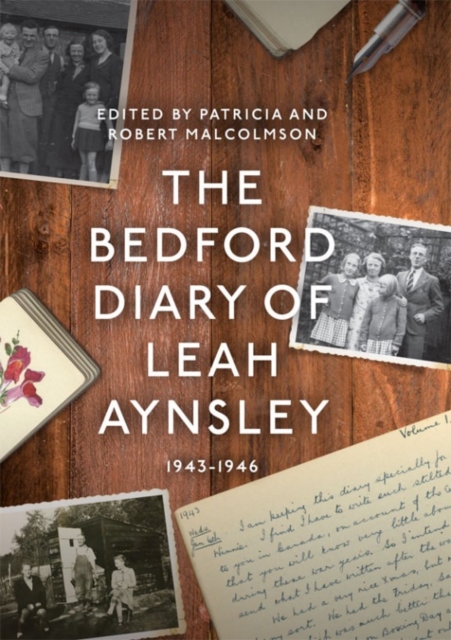
The Bedford Diary of Leah Aynsley, 1943-1946 Hardback
Edited by Patricia Malcolmson, Robert (Author) Malcolmson
Part of the Publications Bedfordshire Hist Rec Soc series
Hardback
Description
The Bedford Diary of Leah Aynsley, 1943-1946, provides a fascinating insight into the daily life of a working class woman during the Second World War. Edited by Patricia and Robert Malcolmson, The Bedford Diary of Leah Aynsley, 1943-1946, provides a fascinating insight into the daily life of a working class woman during the Second World War.
Leah hoped that her diary, which shegave as a bequest to Bedfordshire Archives Service, would: 'often be useful to settle arguments as to what happened on such and such occasions.' She also thought that: 'being written by a working-class person among whom I suspectnot many will keep such diaries . [it] may be interesting in future centuries'. Leah moved with her parents and two brothers to live in Queens Park, Bedford, in 1921 while in her twentieth year.
During the war years she worked for W. H. Allen & Sons Engineering Works and the diary includes her thoughts on her job there and the work that was undertaken by the firm.
The diary also details her day to day activities, generally confined to cycling distance of her home.
But she had a busy and active life - working on her allotment in Bromham, attending BBC concerts in the Corn Exchange as well as going to local lectures and folk dances.
Throughout the diary Leah comments on aspects of war-time Bedford including the influx of American airmen, rationing, Home Guard duties, bombing raids, air-raid warnings and preparations for invasion.
Her style - understated, measured, factual, domestic but engaging - isno better captured than in her entry on Victory Day: 'V DAY.
Well, the day is nearly over now. Very quiet around here. I have not heard any victory bells. The street has blossomed out into flags, bunting and fairy lights.
The local shops were open - even the fish shop - and the baker called as usual ...
Churchill broadcast at 3 p.m. ... A very pleasant day in May.'
Information
-
Available to Order - This title is available to order, with delivery expected within 2 weeks
- Format:Hardback
- Pages:180 pages, 9 b/w, 2 line illus.
- Publisher:Boydell & Brewer Ltd
- Publication Date:21/02/2020
- Category:
- ISBN:9780851550831
Information
-
Available to Order - This title is available to order, with delivery expected within 2 weeks
- Format:Hardback
- Pages:180 pages, 9 b/w, 2 line illus.
- Publisher:Boydell & Brewer Ltd
- Publication Date:21/02/2020
- Category:
- ISBN:9780851550831










